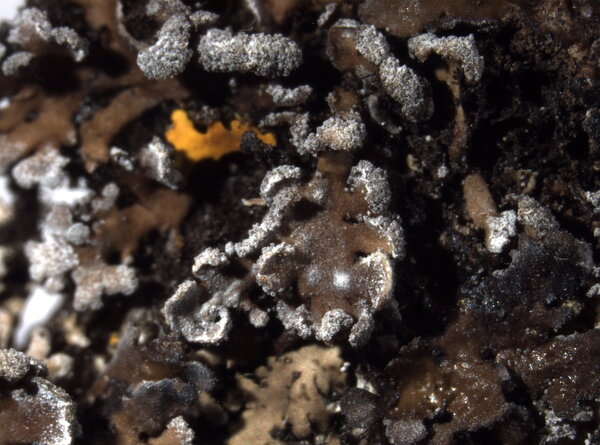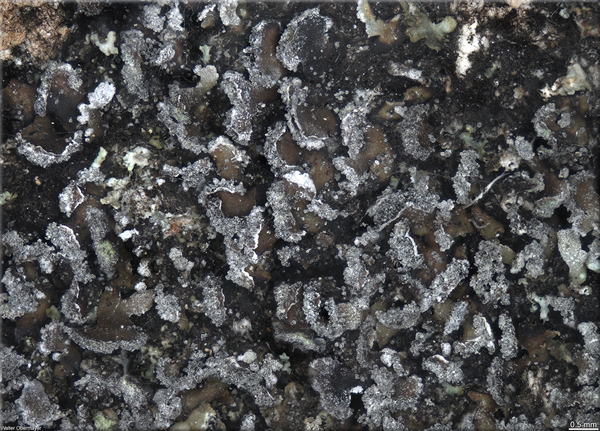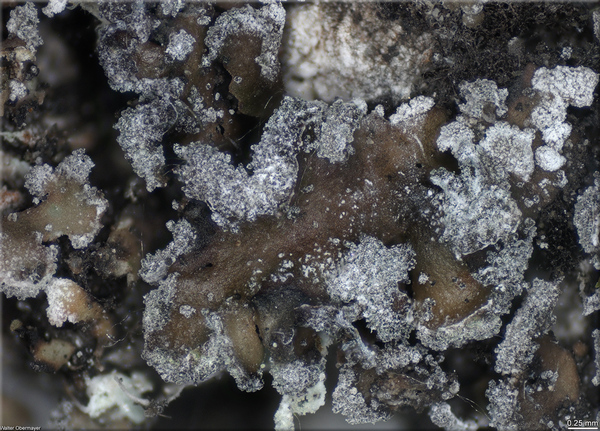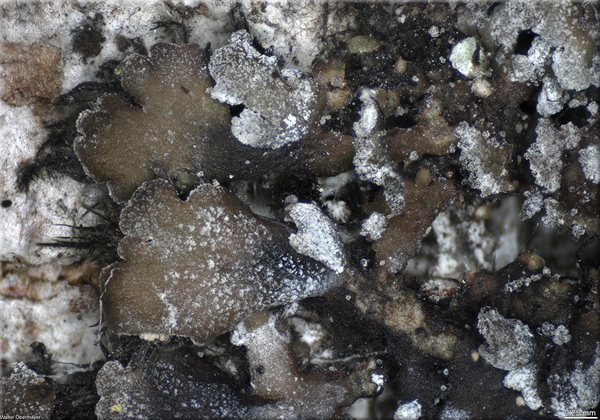Physconia perisidiosa (Erichsen) Moberg
Symb. Bot. Upsal., 22, 1: 90, 1977. Basionym: Physcia perisidiosa Erichsen - Verh. bot. Ver. Prov. Brandenburg, 72: 57, 1930.
Synonyms: Physcia farrea auct. p.p.; Physcia farrea var. laceratula B. de Lesd.; Physconia farrea auct.; Poeltonia perisidiosa (Erichsen) S.Y. Kondr., Lőkös & Hur
Distribution: N - VG (Tretiach & Carvalho 1995, Carvalho 1997), Frl (TSB 18183), Ven (Nascimbene 2008c, Nascimbene & Marini 2010), TAA (Nascimbene & al. 2007b, 2014, Nascimbene 2014), Lomb (Zocchi & al. 1997, Valcuvia & al. 2003, Isocrono & al. 2008, Gheza & al. 2020), Piem (Caniglia & al. 1992, Giordani & al. 2003b, Piervittori 2003, Castino 2004, Matteucci & al. 2010, Giordani & Malaspina 2016), VA (Piervittori & Isocrono 1999, Giordani & al. 2003b, Matteucci & al. 2008), Emil (Bassi 1995, Gasparo & Tretiach 1996, Nimis & al. 1996, Fariselli & al. 2020), Lig (Passauer 1976, Brunialti & al. 1999, Giordani & al. 2002, 2025, Brunialti & Giordani 2003). C - Tosc (Tretiach & Nimis 1994, Loppi & Corsini 1995, Loppi & Putortì 1995, Loppi & al. 1994, 1995, 1997, 1997e, 1998, 1998b, 1999a, 2002, 2002c, 2004, 2006, Loppi 1996, Loppi & De Dominicis 1996, Monaci & al. 1997, Putortì & al. 1998, Loppi & Nascimbene 1998, 2010, Benesperi 2000a, 2011, Loppi & Pirintsos 2000, Frati & al. 2006b, 2007, Benesperi & al. 2007, Paoli & Loppi 2008, Brunialti & Frati 2010, Paoli & al. 2012, 2012b, 2013, 2015d, Brackel 2015, Frati & Brunialti 2023), Marc (Nimis & Tretiach 1999, Brackel 2015), Umb (Ravera 1998, Panfili 2000b, Ravera & al. 2006), Laz (Ravera 2001, Massari & Ravera 2002, Nimis & Tretiach 2004, Ruisi & al. 2005, Munzi & al. 2007, Ravera & Genovesi 2008, Zucconi & al. 2013), Abr (Recchia & al. 1993, Olivieri & Pacioni 1996, Olivieri & al. 1997, 1997b, Loppi & al. 1999, Frati & Brunialti 2006, Brackel 2015, Caporale & al. 2016, Corona & al. 2016, Gheza & al. 2021), Mol (Nimis & Tretiach 1999, Caporale & al. 2008, Genovesi & Ravera 2014, Paoli & al. 2015, Caporale & Ravera 2020), Sar (Zedda 1995, 2002, 2002b, Zedda & al. 2001, Rizzi & al. 2011, Kodnik & al. 2011, Giordani & al. 2013, Di Nuzzo & al. 2022). S - Camp (Aprile & al. 2003b, Ravera & Brunialti 2013), Pugl (Nimis & Tretiach 1999), Bas (Nimis & Tretiach 1999, Potenza 2006, Brackel 2011, Cassola & al. 2025), Cal (Puntillo 1995, 1996, Incerti & Nimis 2006), Si (Nimis & al. 1994, Brackel 2008b, Ravera & al. 2023b).
Description: Thallus foliose, heteromerous, dorsiventral, loosely adnate, irregular and sometimes pulvinate, forming up to 5 cm wide patches. Lobes short, partly imbricate, 0.5-1.5(-1.8) mm wide, mostly flat, grey to grey-brown, glossy in epruinose parts, coarsely pruinose at least at tips and margins, with labriform soralia on the upturned lobe ends, the soredia granular to strongly isidioid in older parts, darkening with age. Lower surface pale at margins, darkening centrally, the lobe ends distinctly whitish and ecorticate, with black, squarrose rhizines. Upper cortex scleroplectenchymatous with thick-walled cells (cell lumina <2.5 µm); medulla white; lower cortex absent at lobe tips, prosoplectenchymatous elsewhere. Apothecia very rare, lecanorine, with sorediate and sometimes lobulate thalline margins. Asci 8-spored, Lecanora-type. Ascospores 1-septate, brown, ellipsoid, (24-)26-32(-35) x 15-18(-21) µm, thickened at septum but not at apices, Physconia-type. Pycnidia rare. Conidia 4-6 x c. 1 µm. Photobiont chlorococcoid. Spot tests: cortex and medulla K-, C-, KC-, P-. Chemistry: without lichen substances. Note: a Mediterranean to mild-temperate lichen with a fragmented holarctic distribution, found both on bark and on epiphytic mosses; most common in submediterranean areas with a warm-suboceanic climate, but rare in disturbed habitats.
Growth form: Foliose, narrow lobed
Substrata: bark
Photobiont: green algae other than Trentepohlia
Reproductive strategy: mainly asexual, by soredia, or soredia-like structures (e.g. blastidia)
Most common in areas with a humid-warm climate (e.g. most of Tyrrenian Italy)
Commonnes-rarity: (info)
Alpine belt: absent
Subalpine belt: absent
Oromediterranean belt: absent
Montane belt: rather common
Submediterranean belt: rather rare
Padanian area: extremely rare
Humid submediterranean belt: rather common
Humid mediterranean belt: rather rare
Dry mediterranean belt: extremely rare
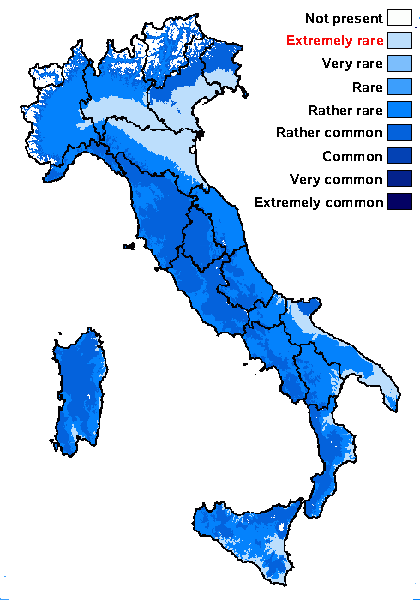
Predictive model
Herbarium samples
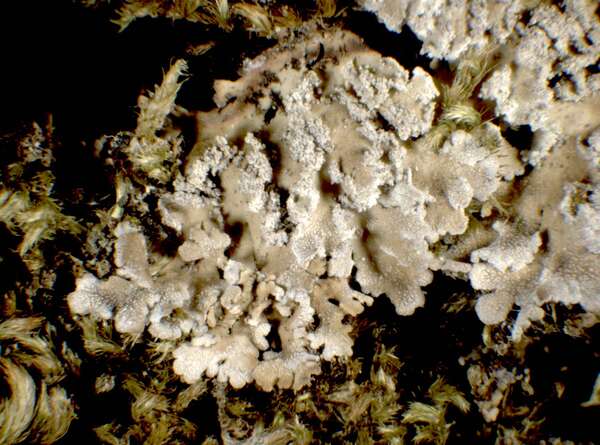

P.L. Nimis; Owner: Department of Life Sciences, University of Trieste
Herbarium: TSB (13075)
2001/12/05
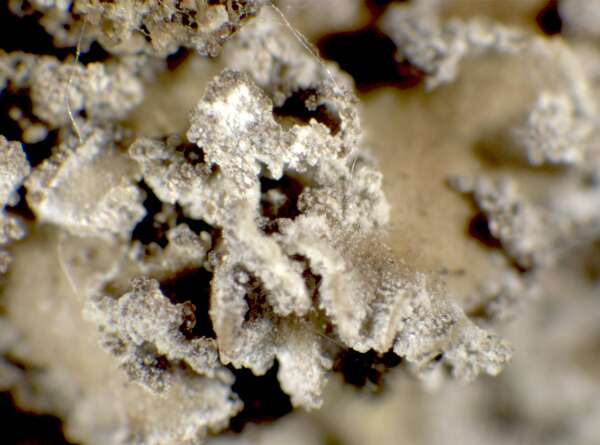

P.L. Nimis; Owner: Department of Life Sciences, University of Trieste
Herbarium: TSB (13075)
2001/12/05
detail of soralia


P.L. Nimis; Owner: Department of Life Sciences, University of Trieste
Herbarium: TSB (27413)
2001/12/03


P.L.Nimis; Owner: Department of Life Sciences, University of Trieste
Herbarium: TSB (37021)
2008.02.28


P.L.Nimis; Owner: Department of Life Sciences, University of Trieste
Herbarium: TSB (37021)
2008.02.28
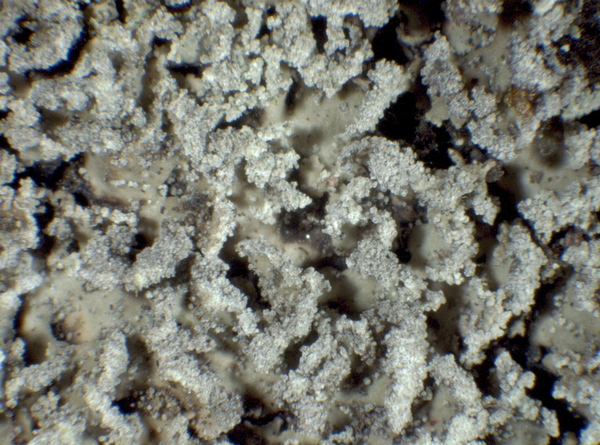

P.L.Nimis; Owner: Department of Life Sciences, University of Trieste
Herbarium: TSB (37021)
2008.02.28
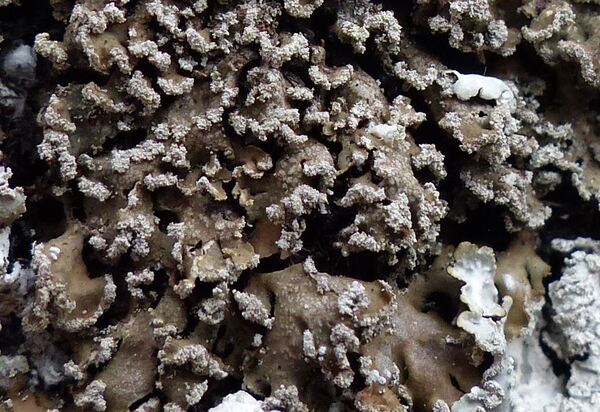

Andrea Moro; Owner: Department of Life Sciences, University of Trieste
Italy, Friuli Venezia Giulia, Trieste, Trieste, Opicina, Viale alberato sulla strada per Monrupino
17/02/2017


Andrea Moro; Owner: Department of Life Sciences, University of Trieste
Italy, Friuli Venezia Giulia, Trieste, Trieste, Opicina, Viale alberato sulla strada per Monrupino
17/02/2017
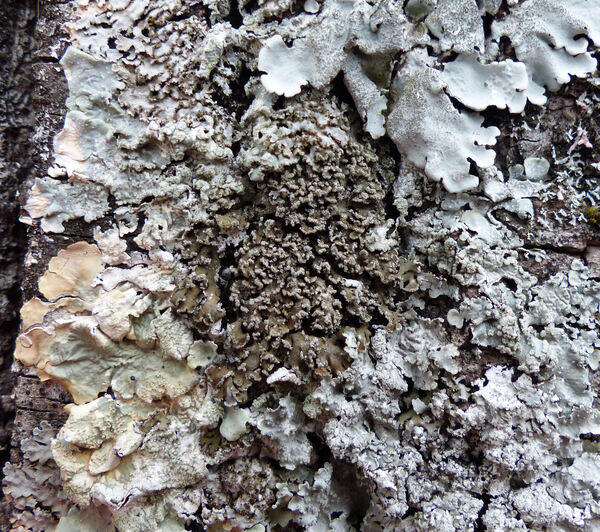

Andrea Moro; Owner: Department of Life Sciences, University of Trieste
Italy, Friuli Venezia Giulia, Trieste, Trieste, Opicina, Viale alberato sulla strada per Monrupino
17/02/2017
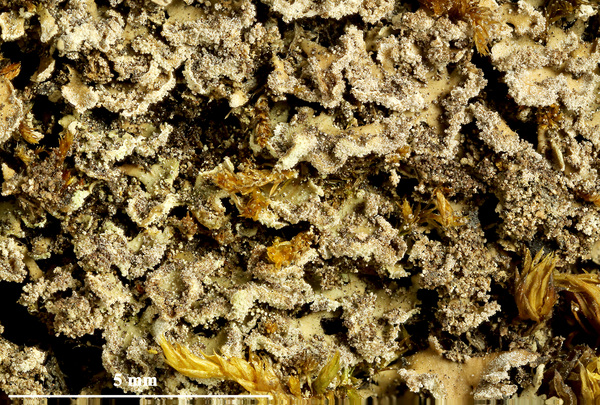

Felix Schumm – CC BY-SA 4.0
[2212], Germany, Baden-Württemberg, Kreis Göppingen, Göppingen, NE von Göppingen im Bürgerhölzle an Lindenallee neben der Straße nach Hohenstaufen, teils sehr staubig, ca. 390 m. Leg. et det. F. Schumm 04.11.1973


Felix Schumm – CC BY-SA 4.0
[2212], Germany, Baden-Württemberg, Kreis Göppingen, Göppingen, NE von Göppingen im Bürgerhölzle an Lindenallee neben der Straße nach Hohenstaufen, teils sehr staubig, ca. 390 m. Leg. et det. F. Schumm 04.11.1973
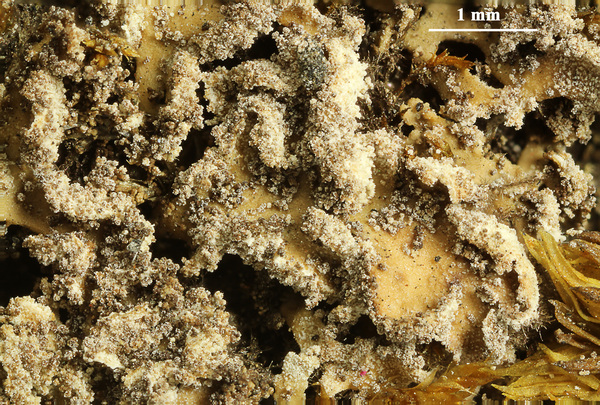

Felix Schumm – CC BY-SA 4.0
[2212], Germany, Baden-Württemberg, Kreis Göppingen, Göppingen, NE von Göppingen im Bürgerhölzle an Lindenallee neben der Straße nach Hohenstaufen, teils sehr staubig, ca. 390 m. Leg. et det. F. Schumm 04.11.1973
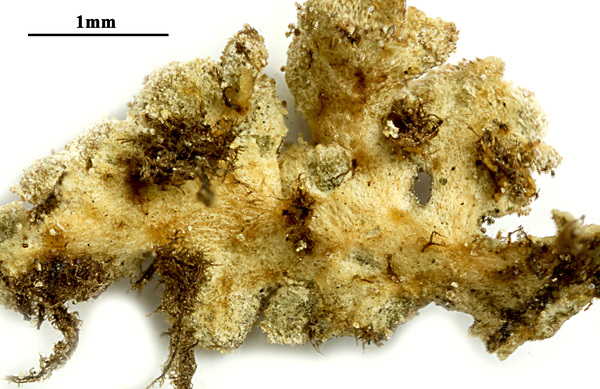

Felix Schumm – CC BY-SA 4.0
[2212], Germany, Baden-Württemberg, Kreis Göppingen, Göppingen, NE von Göppingen im Bürgerhölzle an Lindenallee neben der Straße nach Hohenstaufen, teils sehr staubig, ca. 390 m. Leg. et det. F. Schumm 04.11.1973


Felix Schumm – CC BY-SA 4.0
[2212], Germany, Baden-Württemberg, Kreis Göppingen, Göppingen, NE von Göppingen im Bürgerhölzle an Lindenallee neben der Straße nach Hohenstaufen, teils sehr staubig, ca. 390 m. Leg. et det. F. Schumm 04.11.1973
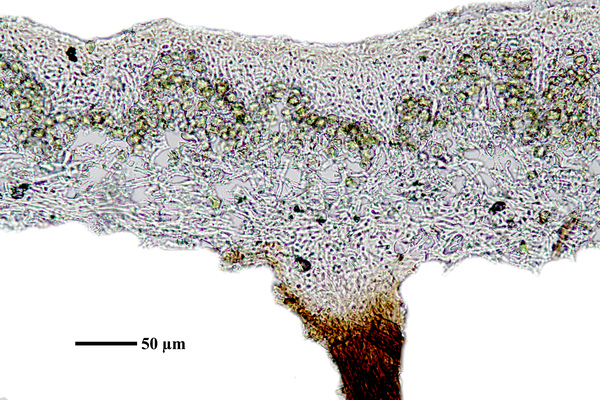

Felix Schumm – CC BY-SA 4.0
[2212], Germany, Baden-Württemberg, Kreis Göppingen, Göppingen, NE von Göppingen im Bürgerhölzle an Lindenallee neben der Straße nach Hohenstaufen, teils sehr staubig, ca. 390 m. Leg. et det. F. Schumm 04.11.1973


Felix Schumm – CC BY-SA 4.0
[2212], Germany, Baden-Württemberg, Kreis Göppingen, Göppingen, NE von Göppingen im Bürgerhölzle an Lindenallee neben der Straße nach Hohenstaufen, teils sehr staubig, ca. 390 m. Leg. et det. F. Schumm 04.11.1973
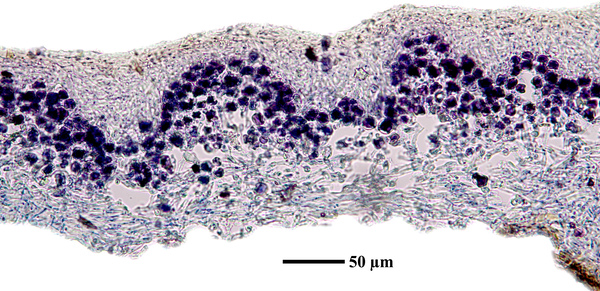

Felix Schumm – CC BY-SA 4.0
[2212], Germany, Baden-Württemberg, Kreis Göppingen, Göppingen, NE von Göppingen im Bürgerhölzle an Lindenallee neben der Straße nach Hohenstaufen, teils sehr staubig, ca. 390 m. Leg. et det. F. Schumm 04.11.1973
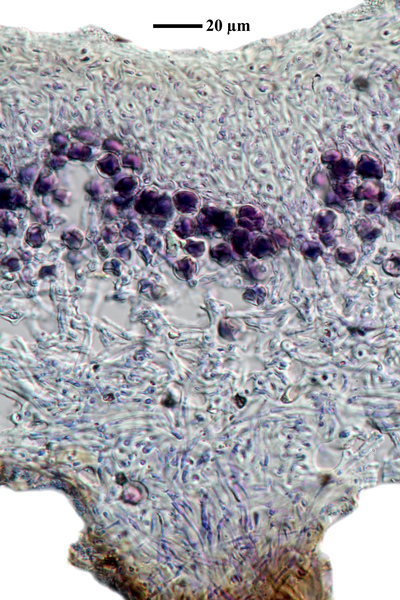

Felix Schumm – CC BY-SA 4.0
[2212], Germany, Baden-Württemberg, Kreis Göppingen, Göppingen, NE von Göppingen im Bürgerhölzle an Lindenallee neben der Straße nach Hohenstaufen, teils sehr staubig, ca. 390 m. Leg. et det. F. Schumm 04.11.1973
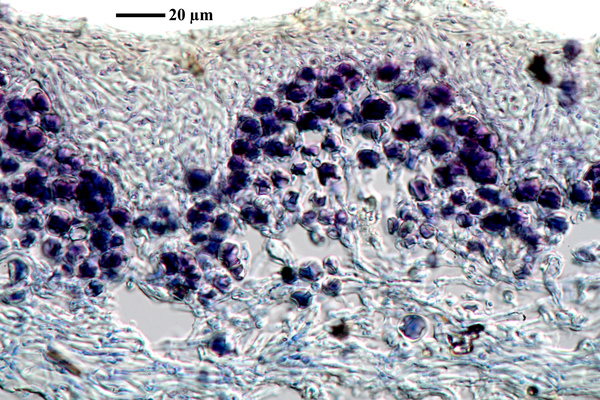

Felix Schumm – CC BY-SA 4.0
[2212], Germany, Baden-Württemberg, Kreis Göppingen, Göppingen, NE von Göppingen im Bürgerhölzle an Lindenallee neben der Straße nach Hohenstaufen, teils sehr staubig, ca. 390 m. Leg. et det. F. Schumm 04.11.1973


Felix Schumm – CC BY-SA 4.0
[2212], Germany, Baden-Württemberg, Kreis Göppingen, Göppingen, NE von Göppingen im Bürgerhölzle an Lindenallee neben der Straße nach Hohenstaufen, teils sehr staubig, ca. 390 m. Leg. et det. F. Schumm 04.11.1973
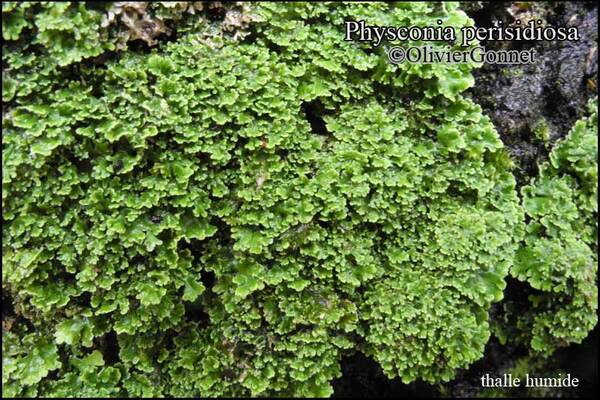
Courtesy Danièle et Olivier Gonnet - Source: https://www.afl-lichenologie.fr/Photos_AFL/Photos_AFL_P/Physconia_perisidiosa.htm
France, 2/10/2010 - Alti - Corse
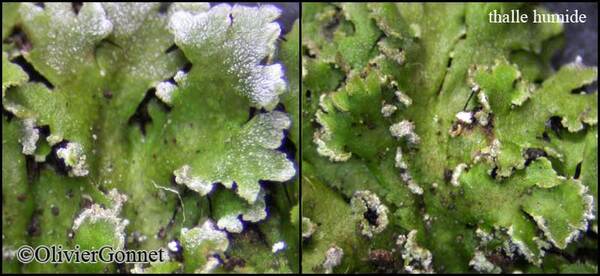
Courtesy Danièle et Olivier Gonnet - Source: https://www.afl-lichenologie.fr/Photos_AFL/Photos_AFL_P/Physconia_perisidiosa.htm
France, 2/10/2010 - Alti - Corse
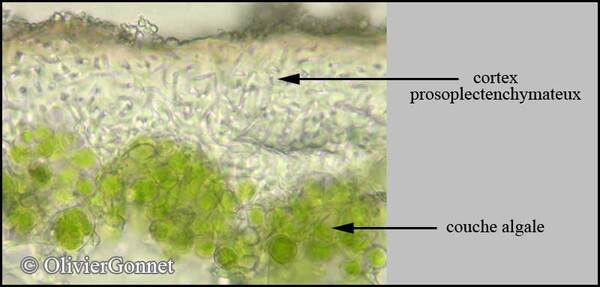
Courtesy Danièle et Olivier Gonnet - Source: https://www.afl-lichenologie.fr/Photos_AFL/Photos_AFL_P/Physconia_perisidiosa.htm
France, 2/10/2010 - Alti - Corse
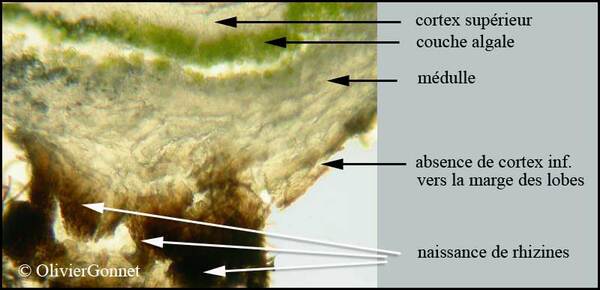
Courtesy Danièle et Olivier Gonnet - Source: https://www.afl-lichenologie.fr/Photos_AFL/Photos_AFL_P/Physconia_perisidiosa.htm
France, 2/10/2010 - Alti - Corse

Courtesy Danièle et Olivier Gonnet - Source: https://www.afl-lichenologie.fr/Photos_AFL/Photos_AFL_P/Physconia_perisidiosa.htm
France, 2/10/2010 - Alti - Corse

Ulrich Kirschbaum CC BY-SA 4.0 - Source: https://www.thm.de/lse/ulrich-kirschbaum/flechtenbilder
Central Europe
Growth form: Foliose, narrow lobed
Substrata: bark
Photobiont: green algae other than Trentepohlia
Reproductive strategy: mainly asexual, by soredia, or soredia-like structures (e.g. blastidia)
Most common in areas with a humid-warm climate (e.g. most of Tyrrenian Italy)
Commonnes-rarity: (info)
Alpine belt: absent
Subalpine belt: absent
Oromediterranean belt: absent
Montane belt: rather common
Submediterranean belt: rather rare
Padanian area: extremely rare
Humid submediterranean belt: rather common
Humid mediterranean belt: rather rare
Dry mediterranean belt: extremely rare

Predictive model
| Herbarium samples |


P.L. Nimis; Owner: Department of Life Sciences, University of Trieste
Herbarium: TSB (13075)
2001/12/05


P.L. Nimis; Owner: Department of Life Sciences, University of Trieste
Herbarium: TSB (13075)
2001/12/05
detail of soralia


P.L. Nimis; Owner: Department of Life Sciences, University of Trieste
Herbarium: TSB (27413)
2001/12/03


P.L.Nimis; Owner: Department of Life Sciences, University of Trieste
Herbarium: TSB (37021)
2008.02.28


P.L.Nimis; Owner: Department of Life Sciences, University of Trieste
Herbarium: TSB (37021)
2008.02.28


P.L.Nimis; Owner: Department of Life Sciences, University of Trieste
Herbarium: TSB (37021)
2008.02.28


Andrea Moro; Owner: Department of Life Sciences, University of Trieste
Italy, Friuli Venezia Giulia, Trieste, Trieste, Opicina, Viale alberato sulla strada per Monrupino
17/02/2017


Andrea Moro; Owner: Department of Life Sciences, University of Trieste
Italy, Friuli Venezia Giulia, Trieste, Trieste, Opicina, Viale alberato sulla strada per Monrupino
17/02/2017


Andrea Moro; Owner: Department of Life Sciences, University of Trieste
Italy, Friuli Venezia Giulia, Trieste, Trieste, Opicina, Viale alberato sulla strada per Monrupino
17/02/2017


Felix Schumm – CC BY-SA 4.0
[2212], Germany, Baden-Württemberg, Kreis Göppingen, Göppingen, NE von Göppingen im Bürgerhölzle an Lindenallee neben der Straße nach Hohenstaufen, teils sehr staubig, ca. 390 m. Leg. et det. F. Schumm 04.11.1973


Felix Schumm – CC BY-SA 4.0
[2212], Germany, Baden-Württemberg, Kreis Göppingen, Göppingen, NE von Göppingen im Bürgerhölzle an Lindenallee neben der Straße nach Hohenstaufen, teils sehr staubig, ca. 390 m. Leg. et det. F. Schumm 04.11.1973


Felix Schumm – CC BY-SA 4.0
[2212], Germany, Baden-Württemberg, Kreis Göppingen, Göppingen, NE von Göppingen im Bürgerhölzle an Lindenallee neben der Straße nach Hohenstaufen, teils sehr staubig, ca. 390 m. Leg. et det. F. Schumm 04.11.1973


Felix Schumm – CC BY-SA 4.0
[2212], Germany, Baden-Württemberg, Kreis Göppingen, Göppingen, NE von Göppingen im Bürgerhölzle an Lindenallee neben der Straße nach Hohenstaufen, teils sehr staubig, ca. 390 m. Leg. et det. F. Schumm 04.11.1973


Felix Schumm – CC BY-SA 4.0
[2212], Germany, Baden-Württemberg, Kreis Göppingen, Göppingen, NE von Göppingen im Bürgerhölzle an Lindenallee neben der Straße nach Hohenstaufen, teils sehr staubig, ca. 390 m. Leg. et det. F. Schumm 04.11.1973


Felix Schumm – CC BY-SA 4.0
[2212], Germany, Baden-Württemberg, Kreis Göppingen, Göppingen, NE von Göppingen im Bürgerhölzle an Lindenallee neben der Straße nach Hohenstaufen, teils sehr staubig, ca. 390 m. Leg. et det. F. Schumm 04.11.1973


Felix Schumm – CC BY-SA 4.0
[2212], Germany, Baden-Württemberg, Kreis Göppingen, Göppingen, NE von Göppingen im Bürgerhölzle an Lindenallee neben der Straße nach Hohenstaufen, teils sehr staubig, ca. 390 m. Leg. et det. F. Schumm 04.11.1973


Felix Schumm – CC BY-SA 4.0
[2212], Germany, Baden-Württemberg, Kreis Göppingen, Göppingen, NE von Göppingen im Bürgerhölzle an Lindenallee neben der Straße nach Hohenstaufen, teils sehr staubig, ca. 390 m. Leg. et det. F. Schumm 04.11.1973


Felix Schumm – CC BY-SA 4.0
[2212], Germany, Baden-Württemberg, Kreis Göppingen, Göppingen, NE von Göppingen im Bürgerhölzle an Lindenallee neben der Straße nach Hohenstaufen, teils sehr staubig, ca. 390 m. Leg. et det. F. Schumm 04.11.1973


Felix Schumm – CC BY-SA 4.0
[2212], Germany, Baden-Württemberg, Kreis Göppingen, Göppingen, NE von Göppingen im Bürgerhölzle an Lindenallee neben der Straße nach Hohenstaufen, teils sehr staubig, ca. 390 m. Leg. et det. F. Schumm 04.11.1973


Felix Schumm – CC BY-SA 4.0
[2212], Germany, Baden-Württemberg, Kreis Göppingen, Göppingen, NE von Göppingen im Bürgerhölzle an Lindenallee neben der Straße nach Hohenstaufen, teils sehr staubig, ca. 390 m. Leg. et det. F. Schumm 04.11.1973

Courtesy Danièle et Olivier Gonnet - Source: https://www.afl-lichenologie.fr/Photos_AFL/Photos_AFL_P/Physconia_perisidiosa.htm
France, 2/10/2010 - Alti - Corse

Courtesy Danièle et Olivier Gonnet - Source: https://www.afl-lichenologie.fr/Photos_AFL/Photos_AFL_P/Physconia_perisidiosa.htm
France, 2/10/2010 - Alti - Corse

Courtesy Danièle et Olivier Gonnet - Source: https://www.afl-lichenologie.fr/Photos_AFL/Photos_AFL_P/Physconia_perisidiosa.htm
France, 2/10/2010 - Alti - Corse

Courtesy Danièle et Olivier Gonnet - Source: https://www.afl-lichenologie.fr/Photos_AFL/Photos_AFL_P/Physconia_perisidiosa.htm
France, 2/10/2010 - Alti - Corse

Courtesy Danièle et Olivier Gonnet - Source: https://www.afl-lichenologie.fr/Photos_AFL/Photos_AFL_P/Physconia_perisidiosa.htm
France, 2/10/2010 - Alti - Corse

 INDEX FUNGORUM
INDEX FUNGORUM
 GBIF
GBIF
 DOLICHENS
DOLICHENS

